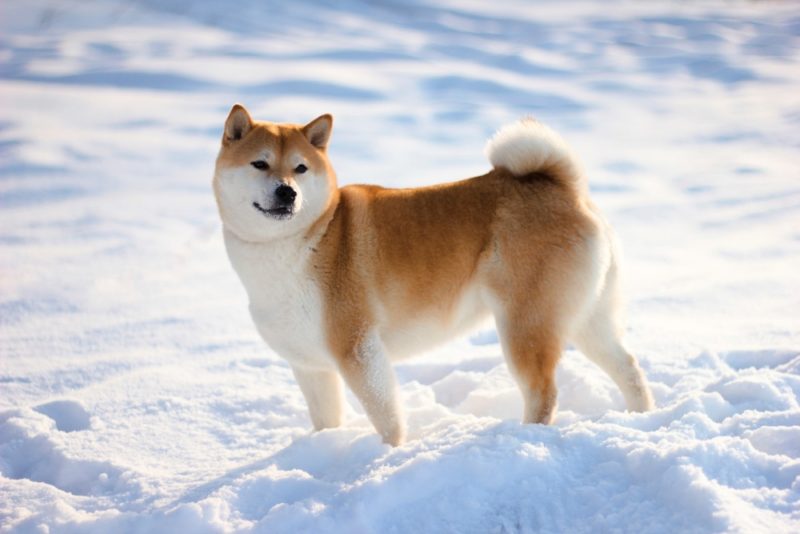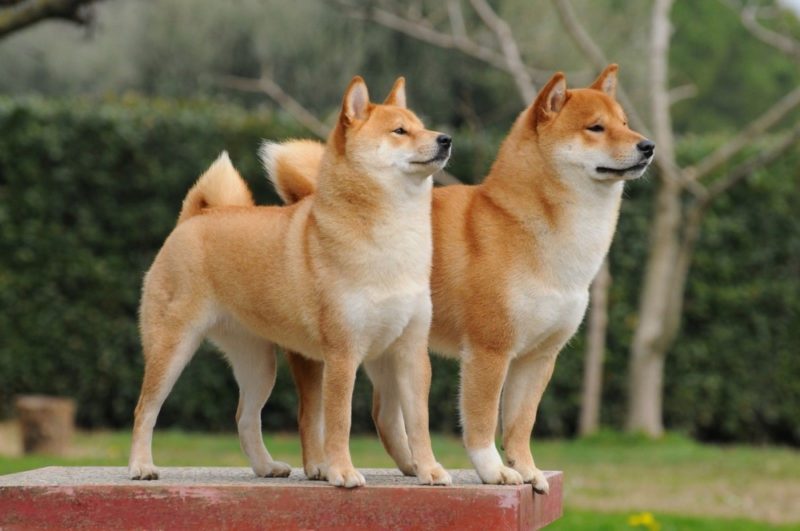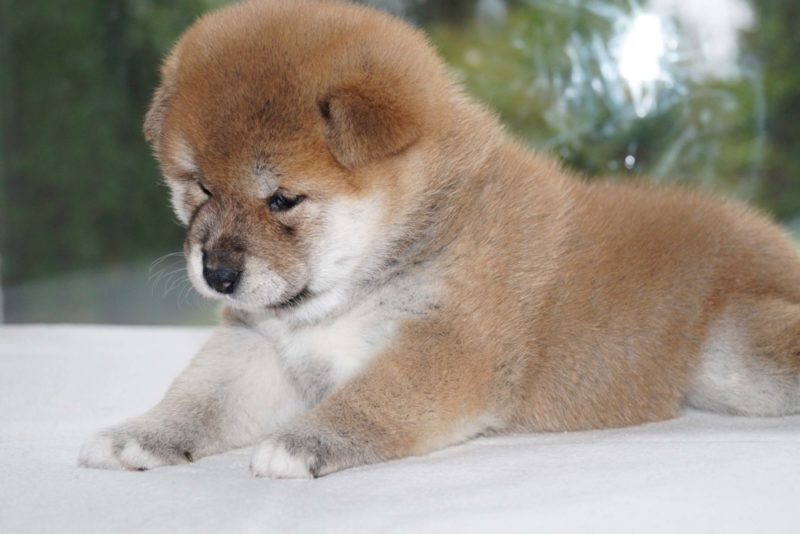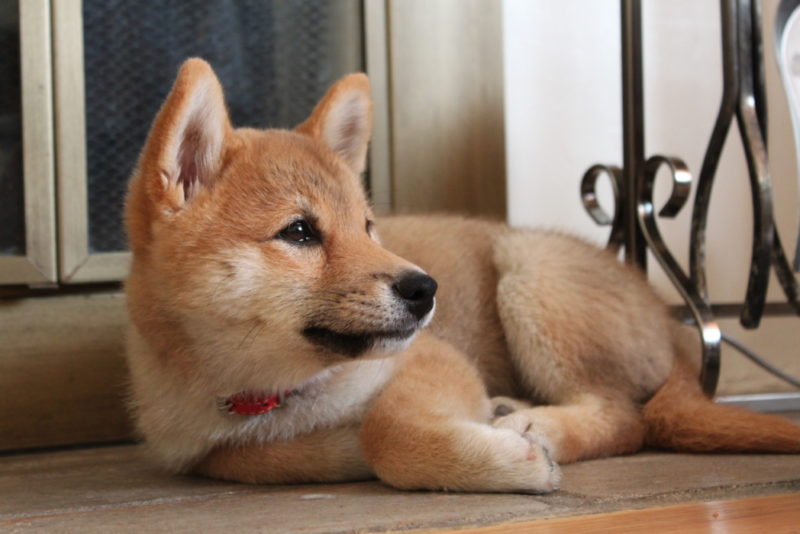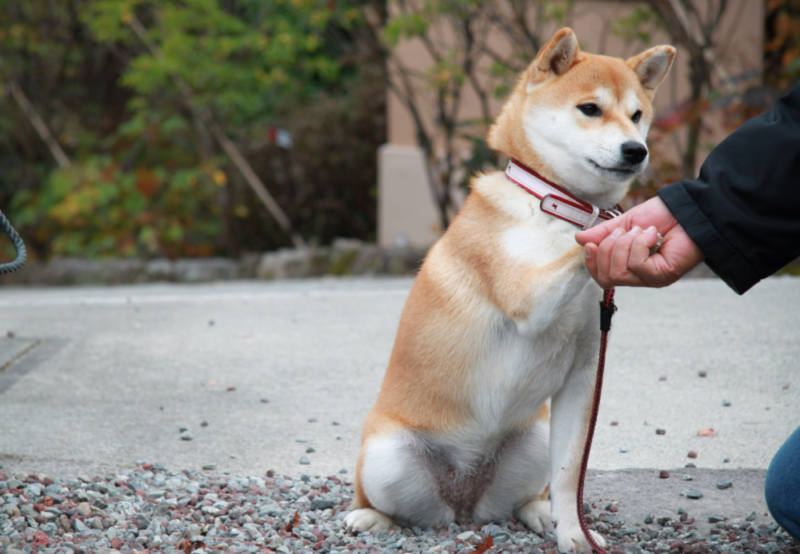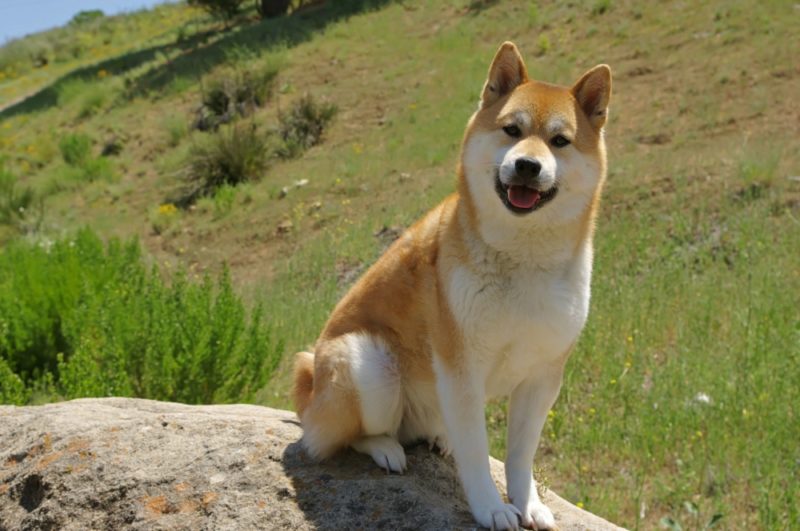Shiba Inu or Shiba Inu is one of the most popular breeds of small hunting dogs, which deserves special attention. Indeed, despite the relevance, not everyone knows how to care for such pets, educate and what can be expected from them.
Material Content:
Breed description
Shiba is considered one of the smallest of the existing breeds of Japanese origin. As for the description, these are individuals of a small size, with a fairly developed physique, a bit like a fox. Their backs are wide, their paws look very powerful, and their tail is thick, curled with a ringlet. Almond-shaped eyes are mostly brown in color, and a wide head with a sharp muzzle and triangular ears make them pretty cute and funny.
Their wool has its own interesting peculiarity, namely it grows in three layers. First comes coarser and longest, then short, but softer. The third layer is the undercoat, it is the softest.
Origin history
Dogs, outwardly similar to the Shiba Inu breed, lived in Japan more than 3 thousand years ago. Such conclusions were drawn from ceramic figures found by archaeologists and genetic research.
Note. It is also believed that the ancestors of Shiba Inu are Chow Chow and Shar Pei.
The Japanese Shiba Inu dog breed was used by the owners mainly for hunting and guarding their homes. In the middle of the 20th century, Japan freely allowed Europeans into their country with their dogs, which began to interbreed with Japanese pets. Because of this breed, the Shiba Inu was on the verge of extinction.
It became a rarity to meet a purebred representative, so the Japanese authorities decided to classify local dogs as natural monuments. This meant the creation of directional selection for breeding purebred Japanese breeds and their subsequent preservation.
In 1934, the Shiba Inu standards were approved, and in 1936 they were officially recognized as a separate type of dog. The breed received recognition of the International Kennel Federation only in 1964.
Shiba Inu Character and Behavior
The character of Shiba Inu is not simple. The pet manifests itself as a rather stubborn and independent member of the family, sometimes giving the owner a lot of problems. These dogs, although devoted to humans and like to spend time with children, but, like all animals, they have their own characteristics.
They can, for no reason, break away and escape in an unknown direction. It happens that during training they begin to show obstinacy and refuse to obey. But, despite the fact that such their behavior can be difficult to understand, these dogs are very smart and you can still subdue them. You just have to stock up on time and patience. If the pet doesn’t like something, or somewhere he messed up, then the animal begins to resort to various tricks (plaintive whimpering, guilty eyes) to soften the person and, thus, to avoid punishment.
Breed standard and puppy selection
According to the standard established by FCL (International Kennel Federation), a shiba-inu dog must meet the following requirements:
- in females, the height at the withers is 36-38 cm, weight is from 7 to 13 kg, in males, respectively, 39-41 cm and 9-13 kg;
- a wide head, the muzzle does not taper or sharpen towards the end, has a clearly visible bend at the transition from the forehead to the nose;
- ears are small, triangular in shape, inclined forward;
- the back of the nose is even, the scent organ itself should have a shape similar to a square with hewn edges, black (sometimes light shades are allowed);
- almond-shaped eyes;
- lips are thick, close to each other;
- the teeth have the correct bite and a complete set, otherwise the individual does not fit the standard;
- the body must be well developed and proportionately folded;
- the sternum of this breed with a well-defined, correct bending of the ribs;
- the front legs are less powerful than the hind legs (due to the fact that the hind legs have strong joints);
- Shiba Inu paws with sturdy pads, gathered bent fingers and black claws;
- the tail is thick and heavy, twisted by a ringlet.
Life expectancy is usually about 12-15 years.
When choosing a puppy, you need to pay attention to the coat color. In purebred individuals, it is as follows:
- red or black with silver and reddish splashes;
- red-sesame (zoning) - all the hair is red, only darker at the tips;
- Sesame - a mixed type of dark shades with light hairs;
- black-sesame - the predominance of dark over light color (almost black shiba-inu);
- fiery red is the most popular color, which is mainly preferred.
It is undesirable to take puppies of light beige and white color, because this color is not considered the best option for the breed.
Features of keeping a dog
The shiba inu dog is more suitable for experienced owners, because its training requires skills, strength and patience. However, if there are no such advantages, then you can always contact a canine specialist to help him raise a pet and teach him how to handle it properly.
When keeping a puppy in an apartment, it is important to keep in mind that until around the age of 8 months he can mess up, chew and spoil things. If it so happened that the owner overlooked, and the dog nevertheless spoiled some expensive thing, then in no case should he be beaten. It is necessary to show your dissatisfaction with the intonation in the voice, so that dissatisfaction is clearly audible. The pet will remember such a lesson much better than beating.
Shiba Inu puppies get along well with little children.They will not bark without a good reason, they usually behave calmly and calmly, which means they will not scare the child. They can get along with cats without problems.
Care, health, feeding
By nature, the Shiba Inu dog is very clean. She even licks her fur like a cat, and even more so she will not wallow in the mud or run through the puddles, but simply pass by.
However, despite independent care, the dog must be combed and bathed.
It is necessary to comb the animal with a brush with rare metal teeth 1 time per week, wipe with a damp cloth. Sometimes it will not be superfluous to comb the wool with a rubber brush to remove dirt and accumulated dead hairs. But when the dog begins to molt, comb it out every day. The procedure should be carried out by a furminator (brush to get rid of undercoat). Moult is especially evident in spring and autumn.
Dog bathing should be done as needed, usually 1 time per month is enough. You should also clean the eyes and ears of the pet with a soft cotton sponge once a week. For the ears, you can use cotton swabs dipped in an antiseptic.
Do not forget about dental hygiene. They need to be cleaned several times a week with a special toothbrush and toothpaste. Cut the nails once a month with a nail clipper, then file them slightly with a file so that the dog does not catch on any uneven edge.
Feet should be inspected regularly for damage or scratches. If there are any wounds, then they will need to be treated with any disinfecting liquid.
It is necessary to monitor the health of the animal, however, do not self-medicate. If suddenly the dog is watery or the color of the eyes changes, the ears begin to smell unpleasant or the pet begins to shake them, you should immediately consult a doctor.
It is better to visit a specialist for any change in the behavior of the animal. After all, a dog can pick up fleas, ticks, or accidentally get hurt during a walk.
As for nutrition, here Shiba Inu is not very picky. You can feed it with both natural products and special food.
If a decision has been made to feed natural food, it is advisable that the veterinarian select and compose a diet, otherwise the dog’s health may be at risk due to an illiterate menu.
You can give the following products:
- raw lean meat (beef, duck, turkey, rabbit);
- prepared cereals (buckwheat, rice, wheat);
- a small amount of vegetables or fruits cut into pieces;
- low fat cottage cheese, kefir or yogurt;
- any marine, boneless, raw fish;
- 2-3 quail eggs Once a week (sometimes chicken is also possible, since allergies are possible on them).
With natural nutrition, it is imperative to give the dog a complex of vitamins, minerals and special additives specially selected for her. That she was active, and the coat remained beautiful and healthy.
Note. In porridge, you can add greens and 1 tsp. vegetable oil.
When choosing a food feed, you need to give preference only to food of the highest class. Make sure that there is always free access to fresh water.
Usually, feeding occurs after the dog has walked. Adult Shiba Inu is fed morning and evening, and the puppy is given food up to 3-4 times a day, gradually reducing the number of feedings as the animal grows older.
Purpose of the breed
Shiba Inu is a hunting breed of dog. Previously, they were actively used when hunting small game, deer, wild boars, birds. It was good hunting abilities that made this breed popular in Japan, and then in Europe. However, in the modern world they are not so often used for their intended purpose. Now it is more of a “companion dog," with which it is comfortable to live in both your home and apartment.
Parenting and training
The main rule in the education and training of Shiba Inu is to do this at an early age.Because an adult with an already formed character will be insanely difficult to re-educate, and most often impossible.
A proud and independent dog can keep the owner out of the bowl, break free when examining paws, teeth or during other necessary procedures. This should be stopped, immediately let the puppy understand who is in charge. This is done by taking away food and subsequent, after an explanatory speech, returning it if it does not admit to a bowl, or toys, when not listening. Only so that the dog understands why he has lost a thing or goodies.
You can’t allow Shiba Inu to jump on a person, you need to squat or bend when playing with him to be on the same level with him.
Do not allow people to bite their hands. The puppy must understand that the limbs are what they are stroking and feeding, so it is not permissible to bite them.
Feed the dog only in its bowl, in no case do not give food from the table. Otherwise, she will begin to steal food, and it will not be easy to wean it.
And you also need to accustom the animal to loneliness. To do this, close the puppy in the room, and when he starts whining or barking, go in and slightly click on his nose or slap on the body and say strictly “fu”. Repeat until the result appears. After success, when the dog stops making noise, you can go in and praise him, play with him or treat him to a treat and let him out of the room.
An important role for the health of the dog is played by walks. Try to walk with her for at least an hour every day. And in order to make your walks more comfortable, get a soft collar with a leash and special toys for dogs.
Pros and Cons of Shiba Inu
In conclusion, it is worth describing all the pros and cons of the Shiba Inu breed.
The positive qualities include the following:
- independence and cleanliness;
- strength, mind and dexterity;
- friendliness (love children and get along well with cats).
The negative qualities include:
- stubbornness;
- cunning;
- spoiling things;
- Frequent ignoring of host commands.
However, it is worth remembering that if you engage in raising a dog on time, devoting him the right amount of time and affection, then he will certainly become a good and faithful friend.


